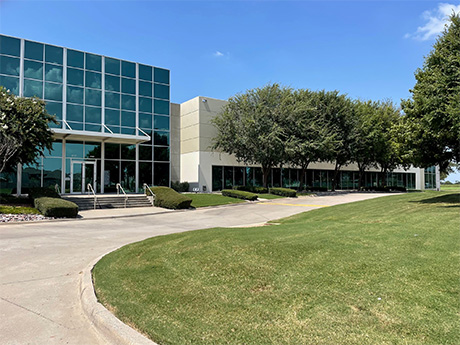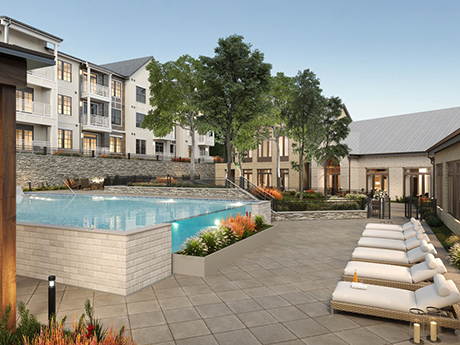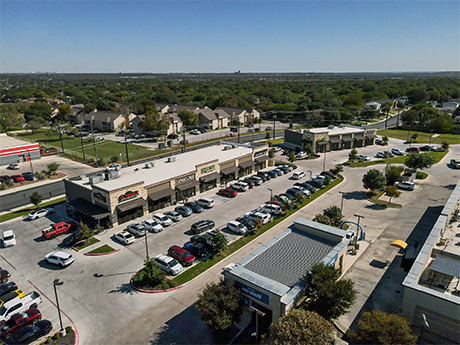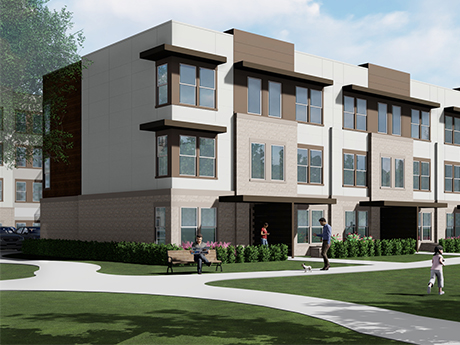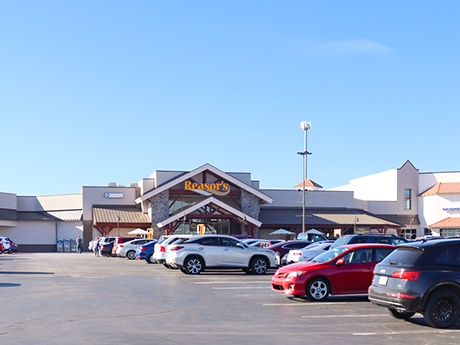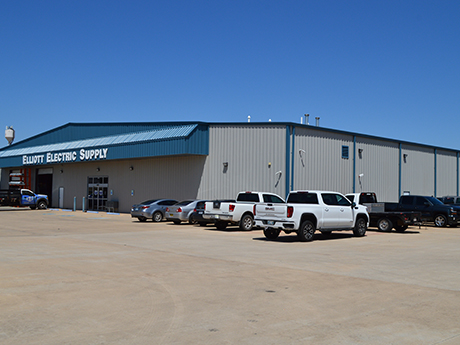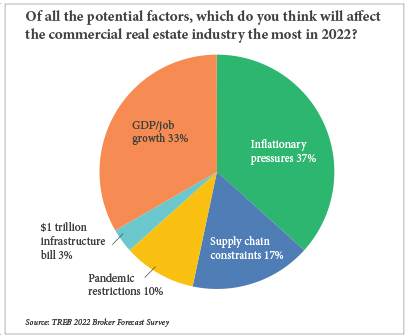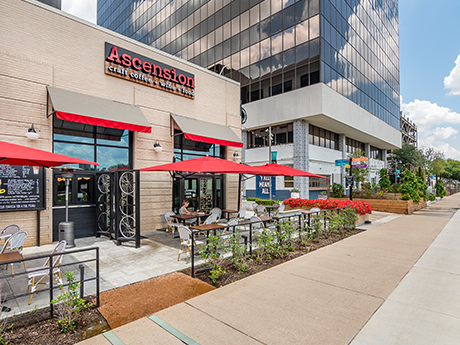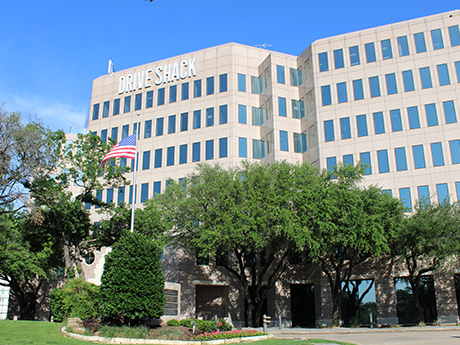By Josh Meredith, director of development, VanTrust Real Estate Sharing a 2,000-mile border, Mexico and the United States trade over $500 billion worth of goods and services each year, representing our country’s second-largest trade partnership. Impressively, over 20 percent of this exchange travels through the El Paso, Texas, port of entry, according to the Texas Comptroller of Public Accounts. This movement has deemed the El Paso/Ciudad Juarez (Mexico) region as one of the most important industrial centers in North America for years. Although the El Paso/Juarez market has a history of extensive commercial activity, with more than 1,100 manufacturing operations alone, the region has remained under the radar, experiencing traditional, steady industrial growth for the past decade. However, with undeniable strategic advantages and 300-plus Fortune 1000 companies in the El Paso/Juarez region, the past couple of years have attracted an increasing number of developers looking to capitalize on the market’s industrial and distribution needs. Now, with record net absorption and a remarkably low vacancy rate, the “borderplex” is the market to watch, building a reputation as not only a competitive industrial center, but also as a driver of some of the most important global manufacturing trends. Competitive Edge With more …
Texas Market Reports
With each year that passes in the current cycle, industrial real estate, along with multifamily, becomes more deeply ingrained as a darling asset class among commercial developers, lenders and investors. For all the talk about Americans being social creatures, there remains a massive contingent of the population that, when it comes to shopping, overwhelmingly prefers the convenience and relative anonymity of e-commerce. What started out as pandemic-related justifications for buying goods online as opposed to in-person has given way to a full-fledged, tacit acknowledgement of a trend that was already in place prior to February 2020. As such, demand for facilities — not just traditional, pure-play industrial spaces — that can function as e-commerce fulfillment and distribution centers continues to skyrocket. This trend is even more pronounced in markets with surging populations like those of major Texas cities. Industrial brokers are the ones who see it all. These professionals talk to tenants about acute real estate needs that are critical to serving customers without accruing exorbitant transit costs. Brokers work with developers who must build and price their spaces in accordance with their own escalating cost structures for land and construction. The deals that industrial brokers execute form the backbone …
By Taylor Williams From sprawling garden-style complexes in the suburbs to wrap-style construction and high-rise buildings in the urban core, multifamily properties come in many shapes and sizes. And in Texas, all of these product types are in high demand. Consequently, developers have generally seen healthy paces of rent growth over the last decade. But with each year of cyclical maturation, land becomes more scarce, construction grows more costly and more communities come on line, making the competition to secure renters increasingly stiff. On a more granular level, bidding wars for large tracts of land that can support major residential density are becoming increasingly intense with the growth of build-to-rent (BTR) development throughout Texas. Global supply chain disruption is putting relentless pressure on costs of construction materials and timelines for new projects, and leasing initiatives are getting smarter via sophisticated proptech platforms that were developed exclusively with real estate operations in mind. But these economic and operational constraints exist entirely on the supply side of the market. Simultaneously, demand for housing is accelerating unencumbered throughout Texas, a perennial medalist in population growth among the 50 states. These market factors are creating an unusual dynamic in which the forces that drive …
By Steve Monroe, CCIM, San Antonio market manager, Oldham Goodwin The past year has seen steady improvement in the key performance metrics of the San Antonio retail market. Two years ago, participants in the retail sector, both local and national, were understandably preoccupied with questions about how the COVID-19 pandemic would impact retailers and owners of retail properties. The shift toward online shopping had begun several years earlier, and there was great fear that the pandemic would accelerate that trend such that it would prove fatal to retailers. The economic slowdown and quarantine restrictions that were implemented during the early part of the crisis appeared to validate those concerns. However, with the widespread availability and use of vaccines during the past 12 months, the San Antonio retail market, which initially saw significant layoffs and dramatic slowdowns, has come roaring back. The move toward online buying has indeed continued apace, and some consumers have shifted toward having goods delivered to them or utilizing curbside pickup models. In spite of these changes, nimble retailers have adapted to the changing landscape, and most are now thriving. In fact, for most retailers, the biggest operational problems have nothing to do with lack of …
By Tim Harris, vice president of multifamily development, Rosewood Property Co. San Antonio’s multifamily market is realizing its own potential. New nodes of development are emerging, and new projects are meeting pent-up demand for higher-quality renter experiences. Today, developers are building multifamily projects that they wouldn’t have considered five or 10 years ago. They’re no longer stuck in their comfort zones, afraid to venture into new submarkets. And they’re no longer worried that they won’t be rewarded with the rents necessary to provide differentiated properties with unit diversification, higher-end finishes and increased amenities. History, Affordability Historically, many institutional investors and national developers have overlooked San Antonio. Bigger and trendier Texas cities — Austin, Dallas-Fort Worth and Houston — have always overshadowed the Alamo City. That wasn’t always the case, though. In 1860, San Antonio was the largest city in the Lone Star State. It thrived as a center for the cattle industry until the 1930s, when its population fell behind that of Houston and Dallas, mostly because of the booming oil industry. Today, San Antonio’s metro area is the 25th-largest in the country with 2.6 million residents, according to Oxford Economics. Hispanics represent 55.1 percent of the population — the …
By Lanie Beck, director of corporate research, marketing & communications, Stan Johnson Co. Situated on the banks of the Arkansas River in northeast Oklahoma’s Green Country, Tulsa is a hidden gem for residents, employers and commercial real estate investors. Once recognized as the oil capital of the world, Tulsa has become a growing economic base for a variety of industries, including energy, finance, aviation, telecommunications and technology. Attractions and features of the city include the historic Route 66, the Philbrook and Gilcrease Museums, an Art Deco-inspired downtown, the award-winning Gathering Place Park and a vibrant resurgence of intown neighborhoods. Business, Population Boom Tulsa’s central U.S. location and operating costs that run below the national average, as well as a cost of living that is one of the lowest in the country for metro areas, make it incredibly desirable for businesses of all sizes. To help drive awareness during the pandemic, the city launched a rejuvenation project called “Tulsa Remote” that provided financial bonuses to attract more affluent remote workers and enhance the city’s diversity and community. Tulsa’s attractive characteristics, combined with the metro’s active efforts, have contributed to a boost in population growth over the last few years. In 2021, …
By Randy Lacey, SIOR, senior vice president, CBRE | Oklahoma City; and Chris Zach, CPA, associate, CBRE | Oklahoma City Contrary to popular belief, the ongoing pandemic has been a boon to many aspects of the Oklahoma City economy. Industrial real estate growth has been more prominent than any other commercial sector. Those familiar with the city and surrounding area can vouch for the speed and intensity of housing demand and development, but industrial real estate has set itself apart over the last few years. OKC is Here to Stay Oklahoma City has a lot going for it. The market always has been well-positioned in terms of its central geographic location at the intersection of Interstates 35 and 40 and has seen tremendous growth and success in the last decade, with significant headway in the local industrial real estate market. The industry has proven its resiliency amid the pandemic and should continue to fare well into the future. But low costs of living and doing business have further bolstered the appeal of the community. In fact, Oklahoma City is only one of 14 cities across the country to add more than 100,000 people in the last 10 years, …
By Taylor Williams In late October, Raphael Bostic, president of the Federal Reserve Bank of Atlanta, gave a virtual speech in which he carried a glass jar with the word “transitory” labeled on it. Inside the jar were wadded-up dollar bills, deposited by Bostic’s staff members each time they used the word “transitory” to describe the surge in prices of consumer goods and services. The exercise was meant to dispel the notion that the current inflationary environment would be fleeting or short-lived. Based on the results of Texas Real Estate Business’ annual reader forecast survey, commercial brokers and developers/managers in the Lone Star State aren’t likely to be contributing to that fund any time soon. When asked to identify the macroeconomic force that was most likely to impact the commercial real estate industry in 2022, both of these groups selected inflationary pressures over supply chain constraints, pandemic restrictions, the $1 trillion infrastructure bill and employment/gross domestic product (GDP) growth. It’s worth noting that the survey officially closed on Monday, Dec. 13, about a week before the nation began to see a major surge in COVID-19 cases, most of which were classified as the Omicron variant. In the subsequent three-week period, …
By Taylor Williams The factors that have long enticed Texas retailers and restaurants to locate in mixed-use environments are back in full force, such that these users are once again willing to pay a premium for spaces built-in density and walkability. In some ways, this trend never really disappeared in Texas, one of the first states to reopen during the early months of COVID-19. Through measures passed in 2020 like sanctioning to-go alcohol sales and allowing businesses to stay open, albeit at reduced capacities, Texas has worked to minimize retail and restaurant closures and prevent large volumes of these spaces from being returned to markets. Neither has the state’s job and population growth slowed during the 22-month global health crisis, allowing developers across all asset classes to push forward. In addition, the newfound desire from consumers and businesses to work, shop and dine outdoors as much as possible has kept trains rolling on mixed-use projects, which inherently connect different uses through external features like trails, open streets, pocket parks and plazas. From a design standpoint, those connective features remain critically important, says Barry Hand, principal in the Dallas office of global architecture firm Gensler. “Pocket or linear parks are viewed …
By Mike Otillio, research director, Colliers The Dallas office market and North Texas region as a whole continue to evolve as leading destinations for corporate relocations, led in part by a favorable business climate. This reputation as a top landing spot for regional workforce consolidations and outright relocations from other states has helped Dallas become a national leader in some key back-to-work metrics. According to research from security firm Kastle Systems, which monitors keycard, fob and app usage within thousands of office buildings across the country, the average occupancy rate in December across 10 of the country’s biggest markets was 40.6 percent. Dallas was one of the 10 markets tracked in the report, posting an above-average occupancy rate of 52.3 percent. The basic business-friendly climate and healthy pace of job and population growth, along with evidence that users are making stronger pushes to return to their workspaces, have accelerated the market’s office investment sales recovery for value-add, core-plus and stabilized product. Barring any unforeseen circumstances, such as a prolonged spike in cases from the Omicron variant, we expect this trend to continue through 2022. Dallas recorded several notable sales of iconic office assets in 2021, plus numerous deals for suburban …



